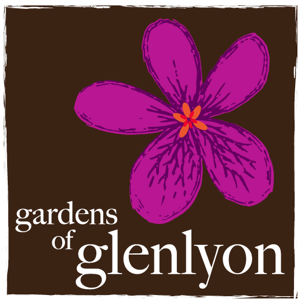Walking into Jenny Corr's garden is to enter a gardener's paradise. The old stone building, built as a hotel in the gold rush days of the 1860's, hides an extensive garden. Huge old trees overhang the rambling paths and a riot of colour cascades across the perennial beds.
Jenny is a born gardener. She has a sense of what to do and where to put things; a science and an art that is reflected in her garden.
Her grandparents had a grand garden near Colac in the Western District and Jenny can remember the joys of running across the lawns. Her parents had a property near Chatsworth with a large garden and lawn tennis court.
As a child, Jenny's part of this garden was a veggie patch where she grew rhubarb "and the odd carrot".
As a young mother with two small boys, Jenny moved to Wheatsheaf where she discovered the joys of the central highlands.
She bought the old hotel in Glenlyon, which was in a sad state of disrepair. Converted into a house many years ago, it was unliveable, with tiny rooms, wobbly walls and rising damp. The 'bathroom' consisted of an old chip heater and a tin bath.
The 'garden' had two enormous radiata pines, a couple of very diseased old apple trees, a huge hedge, one wisteria and an old disused well. Jenny gradually cleaned up the house and garden while caring for her four young children, a very difficult juggling act. She remembers that "When I had little children I was always in demand". However, some days she would escape, leaving her partner in charge of the brood. Her favourite place of refuge in the garden was "up the back". To start the garden, Jenny pulled out the hedge and cut down the diseased trees. She laid down black plastic, held down with bricks, and left it for six months. Then she dug up the area and the beginnings of this beautiful garden were underway. "It just sort of grew, this garden".
Jenny working 'up the back'
|
The unsightly hedges were replaced by fences to protect the large number of trees that were planted- oaks, lindens, parotias and ginkos, to name a few.
The garden grew and grew. "I hate cutting grass" Jenny explains, so more and more of the lawns disappeared, to be replaced by garden beds. Winding paths connect older parts of the garden to the newer areas, from shade to light.
A path to 'up the back'
|
Trips to the great gardens of Europe inspired the planting of heritage roses- bourbons, albas, gallicas, mosses and "tea roses but NOT hybrid teas!"
Jenny accessed plants from renowned nurserymen Dennis Norgate, David Glenn of Lamley and Jack and Zena Marshall of Frogmore, who also gave her invaluable advice. The results can be seen in the creative selection of plants and the combination of colours in the perennial borders.
 |
| Riotous colour in a perennial border |
However, following the prolonged drought and an awareness that her body is not getting any younger, Jenny is considering changes to the garden.
The seed of an idea is germinating, inspired by the 'wildness' achieved in English and European meadow gardens, where bluebells and other wildflowers grow amongst the native grasses, under spreading trees. In Bhutan she was particularly impressed when she saw masses of irises growing wild.
"I would love to let the garden grow completely wild" explains Jenny "but it gets so out of hand!" Nevertheless, bits of wildness are creeping into the garden, particularly 'up the back', where a copse of hazelnuts grow, brought to life in the Spring with a sea of bluebells.
Jenny's partner Peter's contribution to the garden adds a touch of whimsy. He is a sculptor and the gates and other works of art dotted through the garden bring another visual dimension to this delightful place.

The garden will evolve, as gardens do, with time and the increasingly inclement climate. But Jenny's passion for gardens will expertly guide these changes to preserve the best and most endurable parts of this garden.



















